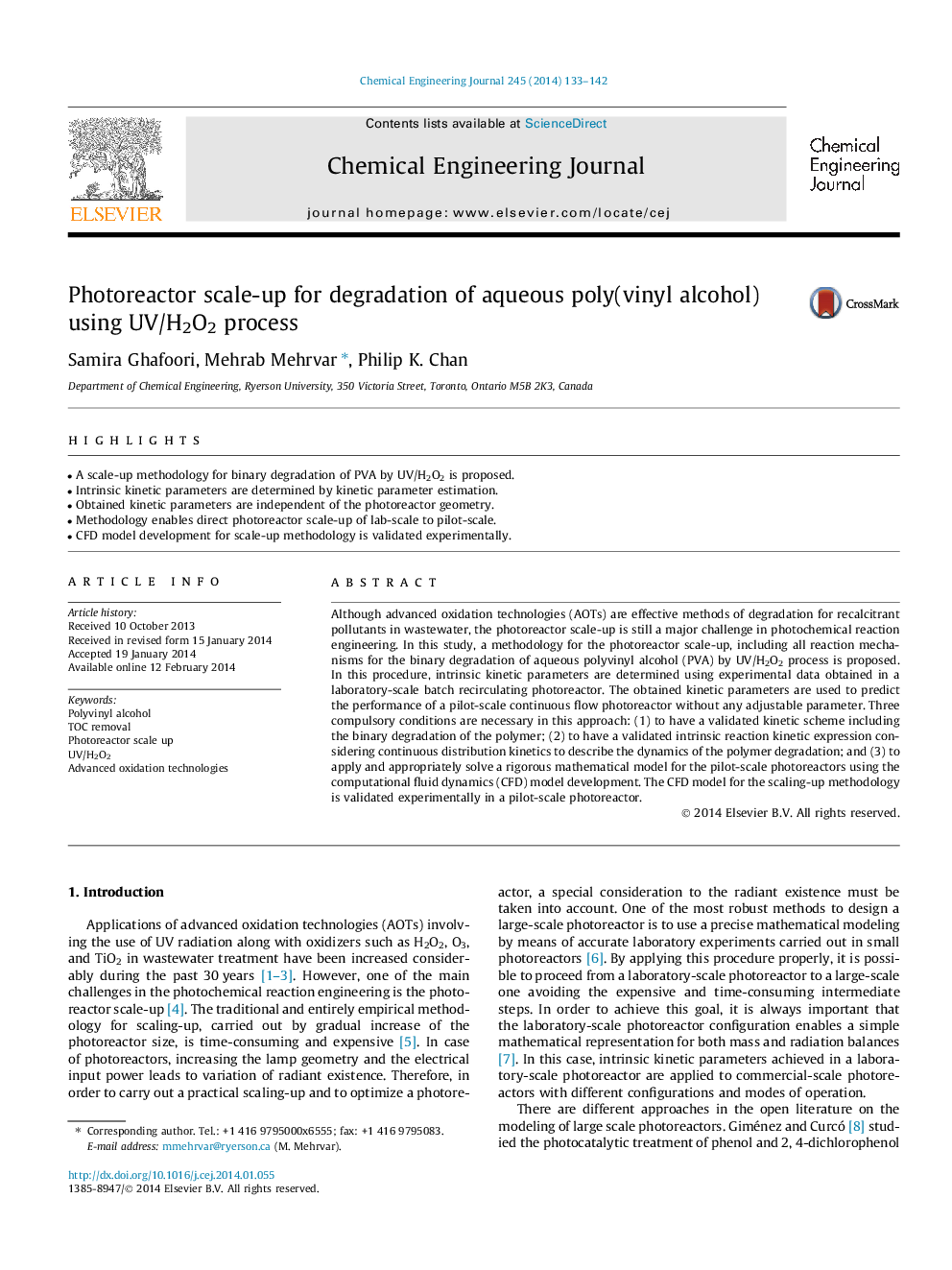| Article ID | Journal | Published Year | Pages | File Type |
|---|---|---|---|---|
| 147447 | Chemical Engineering Journal | 2014 | 10 Pages |
•A scale-up methodology for binary degradation of PVA by UV/H2O2 is proposed.•Intrinsic kinetic parameters are determined by kinetic parameter estimation.•Obtained kinetic parameters are independent of the photoreactor geometry.•Methodology enables direct photoreactor scale-up of lab-scale to pilot-scale.•CFD model development for scale-up methodology is validated experimentally.
Although advanced oxidation technologies (AOTs) are effective methods of degradation for recalcitrant pollutants in wastewater, the photoreactor scale-up is still a major challenge in photochemical reaction engineering. In this study, a methodology for the photoreactor scale-up, including all reaction mechanisms for the binary degradation of aqueous polyvinyl alcohol (PVA) by UV/H2O2 process is proposed. In this procedure, intrinsic kinetic parameters are determined using experimental data obtained in a laboratory-scale batch recirculating photoreactor. The obtained kinetic parameters are used to predict the performance of a pilot-scale continuous flow photoreactor without any adjustable parameter. Three compulsory conditions are necessary in this approach: (1) to have a validated kinetic scheme including the binary degradation of the polymer; (2) to have a validated intrinsic reaction kinetic expression considering continuous distribution kinetics to describe the dynamics of the polymer degradation; and (3) to apply and appropriately solve a rigorous mathematical model for the pilot-scale photoreactors using the computational fluid dynamics (CFD) model development. The CFD model for the scaling-up methodology is validated experimentally in a pilot-scale photoreactor.
